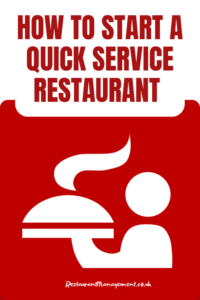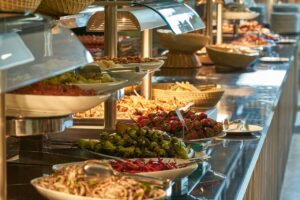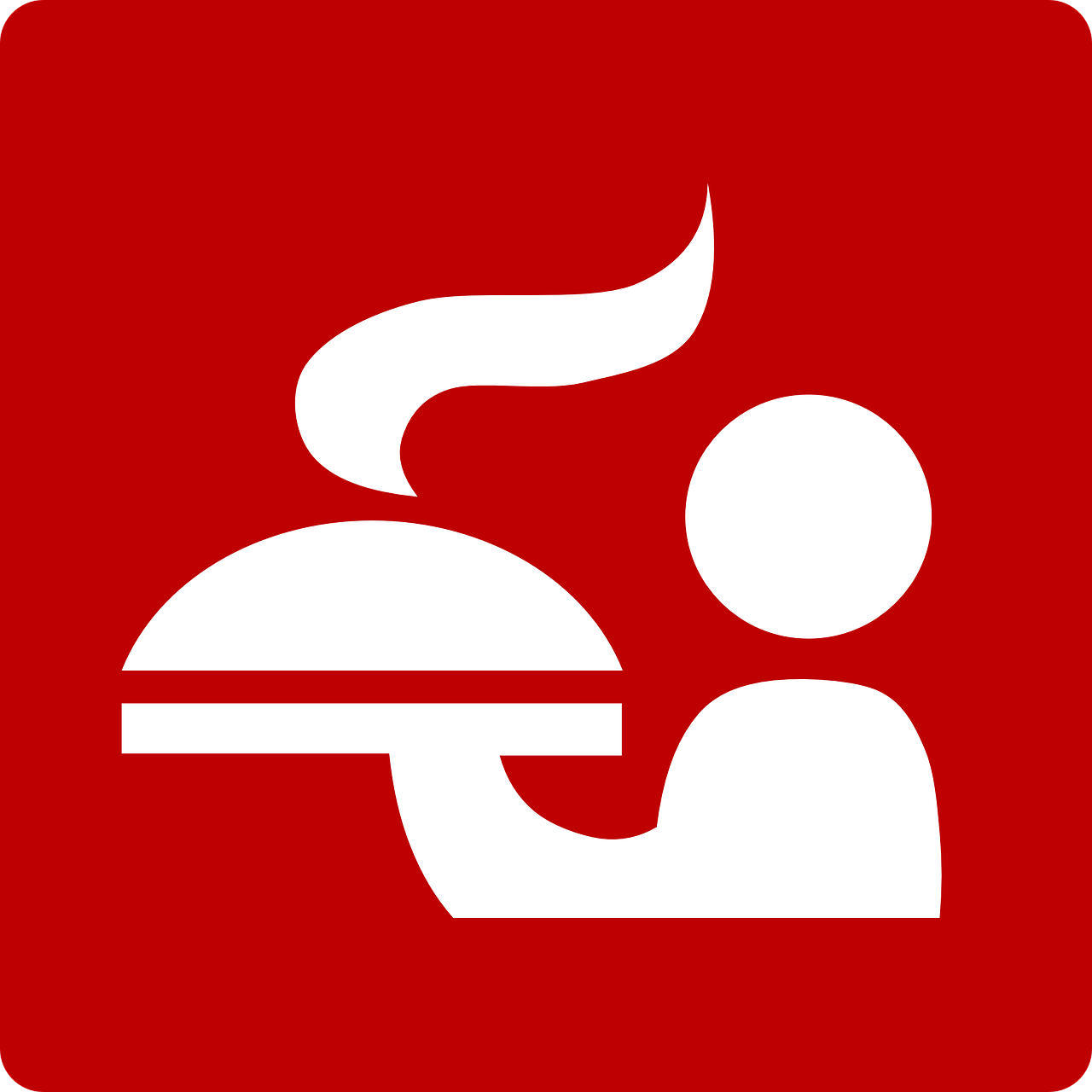Why Quick Service Restaurant Remains a Hot Business Opportunity
How To Start A Quick Service Restaurant (QSR)? So, what’s the deal with Quick Service Restaurant? They’re all about speed and efficiency. You walk in, place your order, and boom—your food’s ready in minutes. It’s a stark contrast to those fancy sit-down places where you wait forever. Understanding this model and how to make it work for you is key to your success in the Quick Service Restaurant industry.
Quick Service Restaurant (QSR) is not just a ubiquitous part of our lives, but also a promising business opportunity. How often do you spot someone enjoying a quick meal on the go? It’s about the food; it’s about the sheer convenience that Quick Service Restaurant offers. And this convenience can translate into significant profits for savvy entrepreneurs.
Now, there’s a significant difference between Quick Service Restaurant and Casual dining. Quick Service Restaurant is quick and usually cheaper, catering to those on the go. Casual dining? It’s more relaxed, with table service and a different vibe, appealing to those looking for a more leisurely dining experience.
When starting out, you must decide whether to franchise or go solo. Franchises come with brand recognition and support, but they also have rules. Going independent gives you freedom, but it’s riskier.

Creating a Solid Business Plan
Your business plan is your roadmap to success. It should include a clear vision, a thorough market analysis, and a strategy for standing out in the very competitive Quick Service Restaurant industry. Remember to consider staffing, suppliers, and day-to-day operations. Financial projections are key. Estimate your costs, revenue, and when you’ll break even. Be realistic and plan for the unexpected.
Conducting Market Research and Identifying Your Niche
First things first, know your audience. Are you targeting college students, busy professionals, or families? Each group has different tastes and budgets. It is crucial to understand who you are targeting to effectively engage your audience. Consider whether your focus is on college students, busy professionals, or families, as each demographic has distinct preferences and budgets.
Additionally, analysing the competition is essential. Identify what is currently available in your area and look for gaps in the market. For instance, you may discover a lack of healthy dining options or limited ethnic cuisines. Recognising these gaps can provide you with a valuable opportunity to cater to unmet needs.
Furthermore, it is important to define your concept clearly. Decide on the type of food you wish to offer—be it burgers, pizza, salads, or something more innovative. Choose a culinary theme that not only resonates with your passion but also appeals to the tastes of your target audience.
Choosing the Best Location for Maximum Pedestrian Flow
Location, location, location. You want a spot with lots of people passing by. Busy streets, near schools or offices, are goldmines.
Urban areas have more foot traffic but higher rent. Suburban spots might be cheaper but less busy. Weigh the pros and cons.
Understand lease agreements and zoning laws. You don’t want surprises down the line.
Designing Your Menu for Profit and Appeal
To ensure every customer who comes through your door has a positive dining experience, it’s essential to keep your menu straightforward yet enticing. Offering too many menu choices can overwhelm customers and complicate kitchen operations. A focused menu allows for better quality control and enhances customer satisfaction.
Price your items wisely. Cover your costs but stay competitive. Offer value meals or combos to attract budget-conscious customers.
Healthier and customisable options are trending. Think salads, wraps, or build-your-own meals.

Funding Your Quick Service Restaurant Dream
Cost Analysis for Opening a Restaurant
Starting a quick service restaurant in London can cost anywhere from £60,000 to over £500,000. Many factors, including rent, furniture, construction, and necessary permits, affect these costs.
The costs for starting a restaurant vary based on lease terms, furniture choices, and interior design.
Rental Space Costs per Square Foot
In London, the average rent is skyrocketing. The average rent price per square foot has risen from £30 to £45 and now to £65. In some cases, it can reach nearly £100 per square foot, which is similar to the highest retail rents, according to Christie&Co.
Prices change based on location and can be much higher in popular areas. Costs also depend on the locality and whether you rent or buy. Costs can increase quickly for larger restaurants, especially those with hundreds or thousands of square feet.
For restaurants looking to rent, expect monthly costs between £2,000 and £5,000, with London often at the higher end.
If you plan to buy an existing restaurant averaging 1,500 square feet, including furniture and equipment, you might spend towards the lower end of the £150,000 to £1 million range. However, building a brand-new restaurant can cost much more, potentially reaching £2-3 million for high-end venues, especially with premium construction and decor.
Keep in mind that these estimates are general. Your total expenses may vary based on your specific situation and the type of restaurant. Consider using a personal calculator or formula based on your plans to understand your potential expenses better.
Running a restaurant in London involves understanding various costs. A typical restaurant spans about 2,500 square feet. Christie&Co stated that five years ago, annual rent was around £75,000, but with recent increases, it could rise to £160,000 based on nearby rents.
In addition to rent, restaurants face other costs, like business rates of about £40,000. To cover these expenses, a restaurant needs weekly sales of around £7,500, totaling nearly three-quarters of a million pounds a year just to break even. This means making about £25 per customer daily throughout the year. Knowing these financial facts is crucial for anyone considering starting a restaurant in this competitive market.
This figure may vary depending on the restaurant’s size, its geographical location, and the kind of cuisine you intend to offer. For example, a small takeaway shop in a suburban area may cost less, while a larger restaurant in a busy city or a full-service fast-food place can cost much more.
Your startup budget will need to cover essentials like:
- Lease or purchase of premises – upfront costs like deposits and rent in advance
- Kitchen equipment – fryers, grills, fridges, POS systems, ventilation
- Fit-out and branding – signage, shopfitting, furniture, and décor
- Initial stock and ingredients
- Licenses and compliance – including food safety certifications
- Staff recruitment and training
- Marketing and launch promotions
UK entrepreneurs typically look at bank loans, personal savings, or startup business grants (like those from the British Business Bank) to fund the business. You might also consider crowdfunding, private investors, or even a franchise package, which includes funding support and a proven business model, but also limits independence.
Before committing, create a detailed business plan with financial projections. Lenders and investors will want to see your break-even point, expected monthly revenue, and how you’ll manage running costs.
Business Plan Templates
A solid business plan is your best tool when exploring financing options like loans, investors, or crowdfunding. It will help you convince potential backers of your vision and ensure you budget for everything- equipment, renovations, initial inventory, and a cushion for unexpected expenses.
Budget for everything—equipment, renovations, initial inventory, and a cushion for unexpected expenses.
Navigating Permits, Licenses, and Health Regulations
Opening a fast food restaurant in the UK means getting your paperwork in order. Careful attention to legal and regulatory requirements is required—no shortcuts here.
To operate successfully and legally, you must register your business formally business with the local council and secure food hygiene certificates. You will also need to apply for a premises licence if you intend to serve alcohol or hot food past 11 pm.
Before you start flipping burgers or firing up the fryer, you must have everything in place to avoid fines and stay compliant with health and safety regulations. Here’s what you’ll need:
- Register Your Food Business
- You’re legally required to register your food business with your local council at least 28 days before opening. It’s free, but mandatory.
- Food Hygiene Certificate – While not legally required for every staff member, it’s highly recommended that you and your staff hold a Level 2 Food Hygiene Certificate to prove food safety knowledge. For managers, Level 3 is ideal.
- Premises Licence (if selling late-night food)
- If you plan to serve hot meals or beverages from 11 PM to 5 AM, you must get a Premises Licence. This is a crucial step as the Licensing Act 2003 requires this licence to follow local rules for late-night service.
- Waste Disposal Registration
- You must register with a licensed waste carrier for commercial food waste and cooking oil disposal.
- Allergen and Food Labelling Compliance
- You need to follow UK food labelling laws, including full allergen disclosure as per Natasha’s Law.
- Health & Safety Risk Assessment
- Required by law under the Health and Safety at Work Act 1974, yothe Health & Safety Risk Assessment is an important step to keep people safe.of your employees and customers. Youust assess and manage all workplace risks.
- It’s essential to collaborate with your local Environmental Health Officer (EHO), as they will conduct inspections of your premises and assist you in maintaining compliance from the very beginning.
Restaurant Management Tips
- Food safety certifications are a must. Regular health inspections will ensure you’re up to code.
- Work closely with local agencies to stay compliant and avoid fines.

Building a Strong Brand and Restaurant Identity
Your brand is more than just a logo. It’s the vibe, the experience, the story. Choose a name that resonates and design an interior that reflects your concept.
Developing a unique selling proposition (USP) is crucial to your branding strategy. Your USP sets you apart from the competition and should be highlighted in all your branding efforts.
Hiring and Training a High-Performance Team
Your staff can make or break your business. Recruit individuals who are dependable, pleasant, and effective.
Provide thorough training on customer service, food safety, and operations. Create manuals and set standards to ensure consistency.
Sourcing Equipment and Ingredients for Efficiency
Invest in quality kitchen equipment for speed and consistency. Essential items include fryers, grills, refrigerators, and POS systems. Some of the best place to source and buy your restaurant equipment is from (LINK)
Build relationships with vendors and distributors to ensure a steady supply of ingredients. Manage inventory wisely to minimise waste.
Launching Your Restaurant with a Bang
Plan a soft opening to test operations and gather feedback. Your restaurant’s launch isn’t just an event—it’s your first impression. Start with a soft opening, ideally a week or two before your official launch. Invite friends, family, and local community members to try your food and service, to help you test your workflow, train staff in real conditions, and gather honest feedback without the pressure of full public exposure.
Use this phase to spot any system kinks, such as order mix-ups, long wait times, or menu gaps, and fix them before the real crowds arrive.
Then comes your grand opening. This is your chance to generate a buzz and drive foot traffic. Promote the launch across your social media channels—use eye-catching photos, behind-the-scenes videos, and countdown posts to build excitement. On the big day, offer limited-time discounts, free samples, or combo deals to attract curious customers.
Create an atmosphere that’s fun, welcoming, and worth sharing. If people enjoy their first visit, they’ll come back, and more importantly, tell others. Your goal? Turn day-one customers into loyal regulars.

Marketing and Growing Your Quick Service Restaurant
To build awareness, use local advertising, digital marketing, and community outreach. To enhance customer experience, offer loyalty programs and mobile ordering apps. Consider partnering with local influencers or food bloggers for shoutouts, and don’t forget to list your event on community forums or local business pages. Gather customer feedback regularly and adapt to changes to stay relevant.
Sustaining Success and Scaling Your Operation
Monitor key performance indicators (KPIs), such as sales, customer satisfaction, and employee performance. Use this data to make informed decisions.
When planning for expansion, it’s essential to assess the performance of your current location. Evaluating the success of your current operations is crucial for determining the most effective strategy for future growth. This analysis can guide you in deciding whether to open a second location or to consider the advantages of franchising your business.
Related articles:
Top 10 Most Profitable Fast Food Franchises
Conclusion: Turning Quick Service Restaurant Dreams Into Reality
The Quick Service Restaurant industry continues to experience significant growth due to the basic need for quick and convenient dining options. The rise of delivery applications and online ordering has made accessing your favourite meals easier than ever, requiring just a few clicks. Moreover, as established chains broaden their presence and fresh competitors continuously emerge, consumers are frequently offered innovative options to discover.
Starting a Quick Service restaurant is challenging but rewarding. With careful planning, dedication, and adaptability, you can turn your vision into a thriving business. Take the leap and bring your Quick Service Restaurant dream to life!
Awesome AI-Driven Customer Service To Skyrocket Your Restaurants
FAQ’s
Are Quick Service restaurants profitable?
Oh, absolutely—if you play your cards right. Quick Service Restaurant can be very profitable thanks to high customer volume, low labour costs, and quick service. But here’s the catch: success depends on smart management, a killer location, and a menu that balances cost and crave-ability. Most Quick Service Restaurant joints aim for a profit margin between 6% to 9%, but high performers can go well above that.
How much is a food license in the UK?
It’s actually free to register a food business in the UK. Yeah, zero pounds. But hang on, that doesn’t mean you’re off the hook. You still need to register with your local council at least 28 days before opening, and you’ll need to pass health and hygiene inspections. Costs include food hygiene training, certifications, and possibly extra permits for handling meat or dairy.
What is the cheapest Quick Service Restaurant franchise to open?
If you’re short on cash but still wanna get in the game, go for low-cost franchises like:
- Subway – entry-level costs can start around £100,000.
- Chop & Wok is often cited as an affordable UK-based option.
- Coffee Blue – a mobile coffee and snack van with lower overhead.
These usually have fewer startup costs than mega-chains like McDonald’s, but may also carry less brand clout. It’s a trade-off. Do your homework.
What is the most profitable item in a Quick Service Restaurant?
Drinks. Yep, soda fountains are gold mines. A medium cola might cost the restaurant 10–15p to make, and they sell it for £1.50+. That’s a markup of, like, 1000%. Insane.
Other top earners?
- French fries are low–cost and have a high markup.
- Soft serve ice cream – minimal ingredients, high return.
- Combo meals – increase the total bill without raising per-item expenses much.
So yeah, if you’re starting your joint, don’t overlook the power of sides and beverages.
Inside The World Of Quick Bites: Exploring Fast Food Culture


